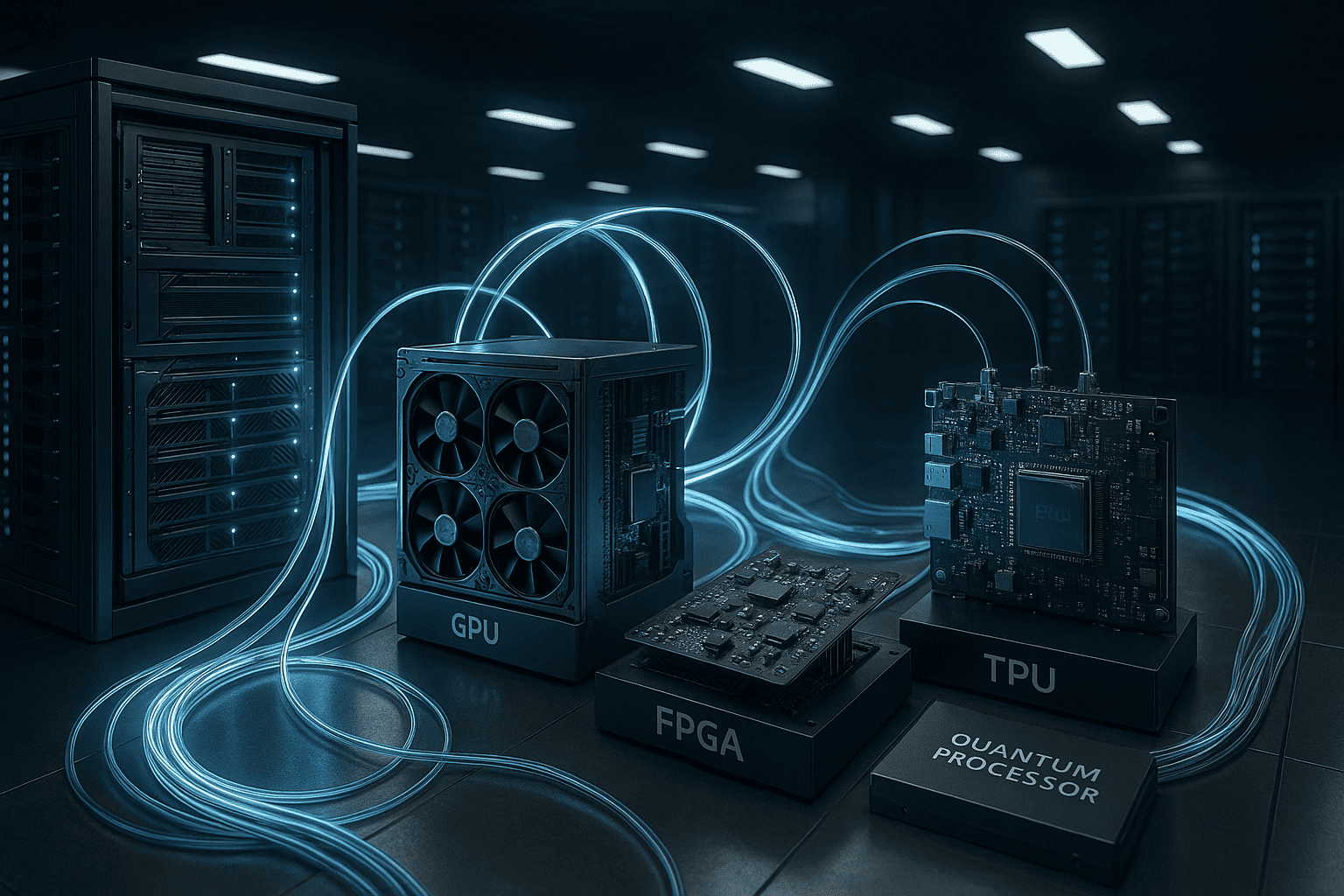Hybrid Computing: The Future of Modern Processing

In the age of rapid digital transformation, computing is evolving at an unprecedented pace. From traditional CPUs to GPUs, quantum processors, and specialized AI accelerators, each technology brings unique strengths. But no single computing paradigm can handle all workloads efficiently. This is where Hybrid Computing comes in — merging multiple computing approaches into a single cohesive system.
Hybrid computing is becoming a cornerstone of industries such as artificial intelligence, scientific research, high-performance computing (HPC), and cloud services.
What is Hybrid Computing?
At its core, hybrid computing is the integration of different types of processors or computing models to solve problems more efficiently. This often involves combining:
- Classical CPUs (Central Processing Units) — general-purpose processors for sequential and control-heavy tasks.
- GPUs (Graphics Processing Units) — highly parallel processors ideal for data-intensive tasks like AI training or simulations.
- FPGAs (Field-Programmable Gate Arrays) — configurable chips optimized for custom workloads.
- Quantum Processors — specialized processors that use quantum mechanics for solving problems classical computers can’t efficiently handle.
- TPUs (Tensor Processing Units) — specialized chips designed for accelerating machine learning workloads.
Hybrid computing systems coordinate these processors so they work together, leveraging the strengths of each for specific parts of a workload.
Why Hybrid Computing is Important
Modern computing workloads are increasingly complex:
- AI models require both high-speed parallel computation and large-scale data movement.
- Scientific simulations demand extreme precision and vast processing power.
- Real-time applications need ultra-low latency and high throughput.
No single type of processor can handle these demands optimally. Hybrid computing allows workloads to be divided intelligently among different processors, maximizing efficiency and performance.
Example
An AI workload might:
- Use CPUs for data preprocessing and orchestration.
- Deploy GPUs for training deep learning models.
- Offload inference to TPUs for speed and energy efficiency.
Key Benefits of Hybrid Computing
- Performance Optimization — matching each task to the processor type best suited for it, increasing efficiency and speed.
- Energy Efficiency — specialized processors execute tasks faster and with less power than general-purpose CPUs.
- Flexibility and Scalability — hybrid systems adapt to workloads and scale resources dynamically.
- Cost-Effectiveness — optimizing resources to reduce dependence on expensive hardware.
Real-World Applications
- Artificial Intelligence and Machine Learning — hybrid computing enables efficient execution of AI workloads. Large-scale AI models like GPT or image recognition systems benefit from GPU acceleration combined with CPU orchestration and TPU inference.
- Scientific Research and Simulation — powers high-performance simulations in physics, climate modeling, and drug discovery. Quantum processors are tested for tasks like protein folding.
- Cloud Computing — cloud providers like AWS, Azure, and Google Cloud offer hybrid computing architectures for optimal workload management.
- Autonomous Systems — autonomous vehicles combine CPU sensor data processing, GPU path planning, and TPU AI inference in real time.
Challenges in Hybrid Computing
- Complexity of Software Development — requires specialized frameworks and tools.
- Resource Scheduling — intelligent orchestration is needed to allocate tasks to processors.
- Data Transfer Bottlenecks — moving data between processors introduces latency.
- Hardware Integration — combining processors into a cohesive system requires engineering precision.
Emerging Trends in Hybrid Computing
- Hybrid CPU-GPU-Quantum Systems — combining classical computing with quantum acceleration for complex computations.
- Edge and Cloud Hybrid Models — edge devices handle local processing while offloading heavy workloads to hybrid cloud systems.
- AI-Driven Orchestration — AI optimizes task allocation across hybrid systems.
- Standardization of Hybrid Architectures — frameworks to make hybrid computing more accessible.
Conclusion
Hybrid computing is not just the next step in processing — it’s a paradigm shift. As workloads grow more complex and diverse, relying on a single type of processor becomes inefficient. Hybrid architectures, which combine CPUs, GPUs, FPGAs, TPUs, and quantum processors, offer a powerful way to meet modern computational demands.
This approach will fuel innovation — from AI breakthroughs to real-time autonomous systems, advanced simulations, and smarter cloud platforms. Hybrid computing is not a future concept anymore — it’s here, transforming how we compute.